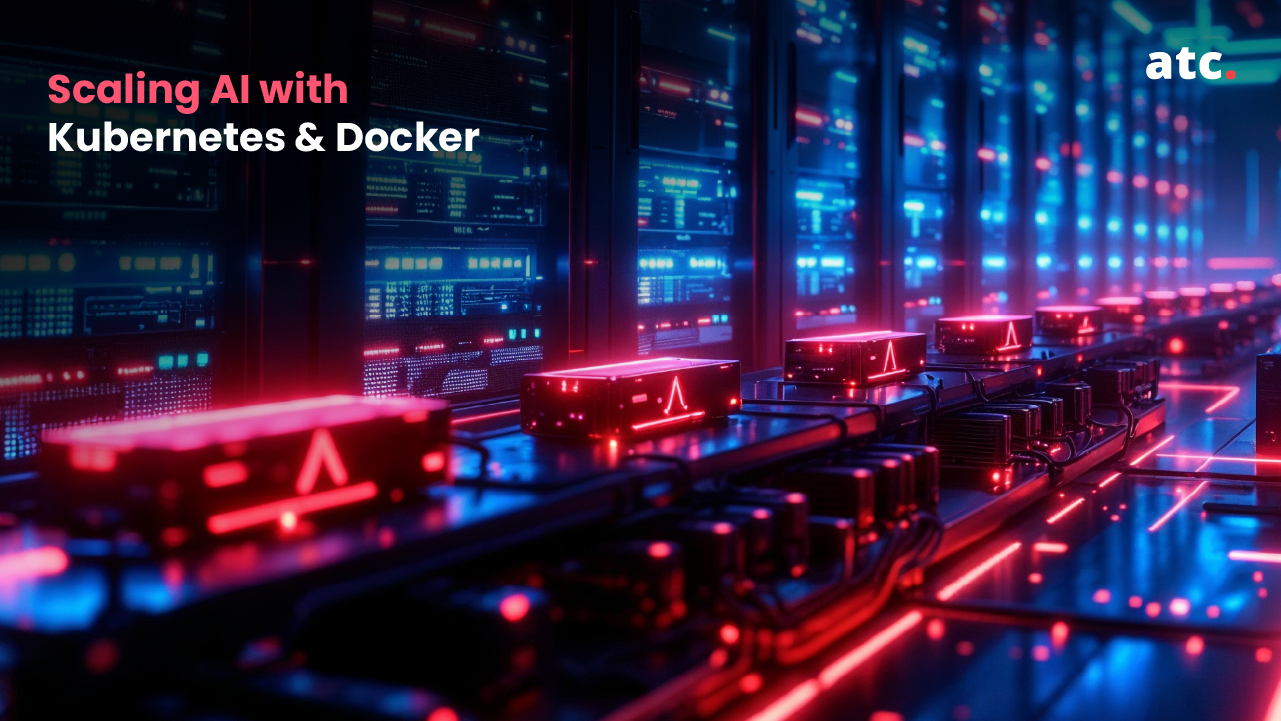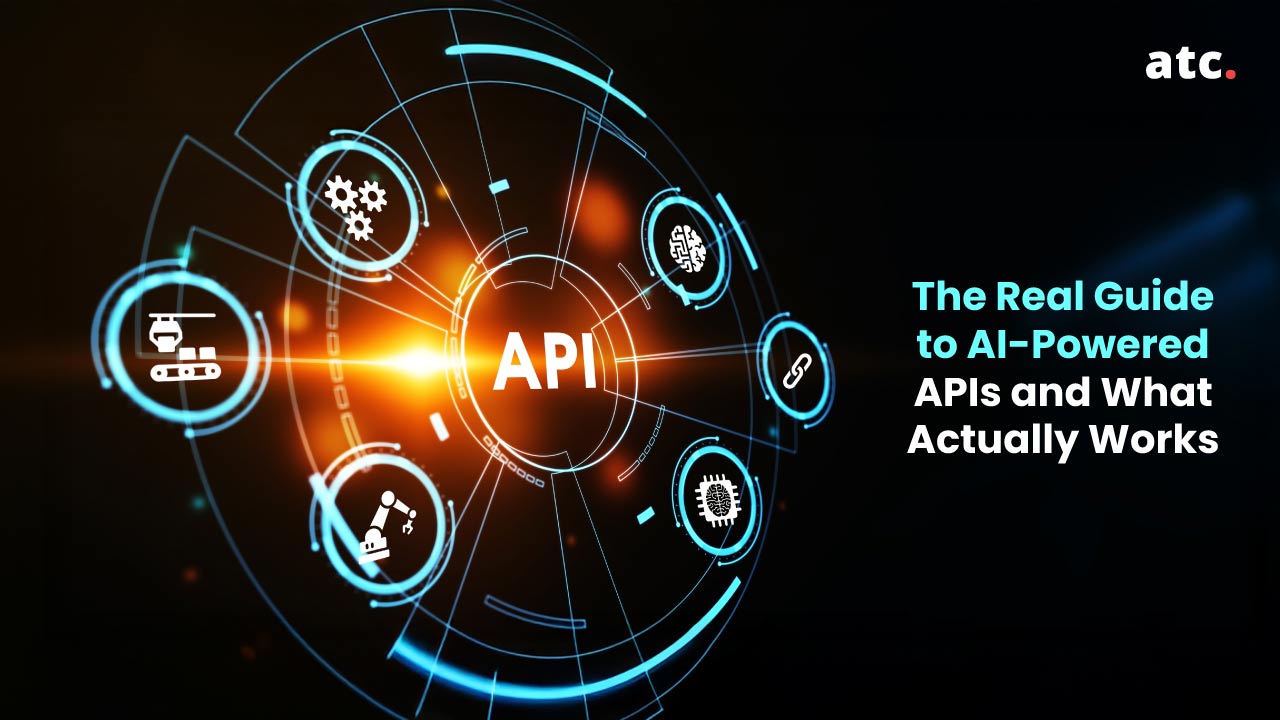Subscribe to the blog
In 2025, as data is foundational to every aspect of the business, the consequences of a single breach are more severe than at any time in history. Organizations are assaulted with cyber attacks every minute of every day, including disabling ransomware and even deadly insider threats that put their reputation, financial circumstances, and very regulatory standing to risk. And now, in the midst of all of that, artificial intelligence (AI) is emerging as a powerful catalyst of cybersecurity, turning static defenses into dynamic, smart systems that help security practitioners anticipate, prevent and respond to threats.
While the theory sounds promising, the reality of deploying artificial intelligence into security is complicated. For those who find themselves stuck attempting to jump the gap from idea to action, ATC's Generative AI Masterclass provides a structured, facilitated learning journey for practitioners. Participants are provided with no-code tools, multi-agent design patterns and capstone projects designed to sustain AI-defenses in scope.
The Modern-Day Cyber Threat:
In the hyper-connected digital world of today, cyber attacks form a vast universe of targets and approaches. It is crucial for senior leaders to comprehend their nuances to build effective defenses.
1. Ransomware's Unrelenting Surge:
Ransomware remains the most egregious threat, with 72% of organizations experiencing at least one attack in the last 12 months. Recovery cost is a mean of $4.5 million, and almost half of the victims pay ransoms despite official advice—often negotiating lower fees in preference to risking loss of data.
Drivers of Growth:
- Ransomware‑as‑a‑Service (RaaS): Low technical barriers encourage new actors.
- Remote‑Work Risks: Decentralized endpoints generally have no enterprise‑level security.
- Economic Incentives: High ROI fuels continuous innovation within criminal groups.
ATC Insight: With 55 new ransomware gangs in 2024—a 67% year-over-year increase—organizations need to move away from reactive backups and toward proactive threat hunting and dark-web monitoring.
2. Zero-Day Exploits: A Persistent Blind Spot:
Zero-day attacks, which are still unidentified by vendors, pose substantial threats. In 2024, 44% of zero-day attacks targeted enterprise platforms, up from 37% in 2023. In addition, security and networking tools made up 60% of these attacks.
- Rapid Exploitation: About 24% of Known Exploited Vulnerabilities (KEVs) are exploited on or prior to the day of public disclosure, which reflects a need for constant monitoring instead of waiting for periodic patch cycles.
- Emerging Vectors: Attackers are increasingly targeting supply-chain software, leveraging existing trust relationships to infiltrate high-value networks.
3. Insider Threats:
Often Underestimated and Inadequately Protected:
Far from unprecedented, insider incidents—either accidental or intentional—impact 74% of organizations, with the average cost of an insider-initiated breach rising to $17.4 million in 2025.
- Human Factors: Most accidental leaks are due to worker carelessness.
- Malicious Insiders: Disgruntled workers or contractors may bypass perimeter controls.
- Detection Challenges: Traditional DLP solutions struggle to distinguish between malicious and legitimate behavior without behavioral AI.
ATC Tip: Leverage user-behavior analytics and real-time IAM policies to identify anomalies—such as bulk downloads or off-hours access—before data exfiltration.
4. Shadow IT and Third-Party Risks:
Unmonitored "shadow" applications and vendor integrations expand the attack surface. IBM's 2024 data breach report will indicate that one in three breaches included shadow data, thus emphasizing the difficulty of maintaining visibility in highly fragmented environments.
5. Increasing Monetary Fines:
The worldwide average expense of a data breach was $4.88 million in 2024, the largest ever, and shows no sign of abating. In very highly regulated industries like banking, these expenses are over $6 million per breach.
How Artificial Intelligence Improves Threat Detection and Response:
- Anomaly Detection and Behavioural Analysis:
A central aspect of AI-based cybersecurity is the ability to create and update an understanding of what is "normal" across networks, users, and devices on an ongoing basis. Modern anomaly detection platforms consume telemetry from Security Information and Event Management (SIEM), endpoint products, and cloud products in real-time and use unsupervised learning to detect anomalies in real-time. Organizations who have deployed such platforms have seen decreases of as much as 80% in Mean Time to Detection (MTTD) and Mean Time to Response (MTTR), thus closing valuable attacker dwell time windows.
Through examination of millions of log lines a day, AI removes benign noise and raises genuine threats—relieving analysts of alert fatigue and allowing them to concentrate on high‑value investigations. Behavioral profiling takes this a step further: UEBA models recognize anomalies like impossible travel, privilege escalation, or unusual data exfiltration—often identifying attack before harm is done.
ATC Insight: Real-time anomaly detection revolutionizes cybersecurity from reactive fire-fighting to proactive threat hunting—enabling teams to "see" what legacy tools miss.
- Natural Language Processing for Phishing Identification:
Phishing remains the top data breach entry point; artificial intelligence is, however, rapidly closing this gap. Sophisticated natural language processing pipelines inspect email headers, body text, and attached URLs, leveraging transformer models like BERT to discern at levels of up to 99% on balanced datasets. These frameworks examine semantics, sender reputation, and link topology and thus detect fine-grained language signals and obfuscation patterns that are frequently missed by signature-based filters.
In addition to text, hybrid models employ computer vision to check logos and page layout to protect against sophisticated site-spoofing attacks. Ongoing learning allows detection models to retrain every time new data arrives—providing scalable, automated safeguarding for millions of messages each day.
It is recommended to marry AI-based phishing filters with user awareness training by incorporating real-time examples of detected emails into simulated phishing exercises, thereby increasing organizational alertness.
Mini Case Study: Darktrace Thwarts a BEC Attack:
In June 2023, a global services company was hit with a business email compromise (BEC) attack by an infected account of a known supplier. Traditional gateways allowed the initial phishing email; however, Darktrace's AI-powered SOC picked up on suspicious SaaS credential activity—flagging simultaneous logins from diverse geolocations and chaining consecutive model breaches. Within minutes, the more advanced monitoring alerts were raised to Darktrace's 24/7 SOC, which supplied actionable insights. Although automated response was set up for human validation, the customer's internal SOC team force-logged the hijacked account by hand and blocked suspicious IPs—averting fund diversion and data exfiltration.
This event highlights AI as a force multiplier: unsupervised learning profiles identify minute "patterns of life" aberrations, while orchestration frameworks enable expert‑led remediation at speed.
ATC Takeaway: A human-in-the-loop approach—where AI provides high-fidelity alerts and experts approve actions—realizes the best trade-off between speed and monitoring.
AI-Driven Defensive Architectures:
AI isn't merely pointing out dangers—it's actually transforming the manner in which organizations protect themselves, streamlining critical security processes and offering intelligence throughout the infrastructure.
1. Automated Patch Management and Vulnerability Scanning:
Enterprise patching cycles have weeks—or months—of lead time. AI-powered patch management tools watch your entire infrastructure 24/7, gobbling up operating system, application, and IoT device telemetry. Machine learning algorithms then: Rank vulnerabilities by tying CVSS scores to exploit probability, threat-actor intent, and your asset business criticality—eliminating as much as 70% of false positives compared to rule-based scanners. Schedule deployments in safe maintenance windows. Automated processes apply patches to sandboxed replicas before deploying certified updates to production—reducing average time‑to‑remediation from 14 days to under 48 hours in top deployments.Ongoing validation of patch effectiveness by re-scanning after deployment and dynamically rolling back patches if there are indications of abnormalities—mitigating operational risk.
ATC Insight: Eliminating the "patch gap" in near real‑time, AI‑based automation turns patching from a quarterly process into an ongoing, security‑focused process.
2. AI-Powered Vulnerability Discovery:
Aside from identified CVEs, generative AI systems can replicate prospective attack sequences—"red teaming" your systems at machine velocity. They:
Fuzz APIs and microservices, exposing logic bugs signature scanners are unable to detect. Align cross-system dependencies, revealing supply-chain vulnerabilities. Anticipate new exploit methods from dark‑web discussion and ongoing studies, allowing pre‑emptive hardening.
3. Intelligent Identity and Access Management (IAM) and Zero Trust:
Zero-Trust security requires all users, devices, and requests to be continuously authenticated. Artificial Intelligence brings this vision to life: the models monitor typing behavior, device telemetry, and session context—automatically escalating authentication or terminating sessions when suspicious behavior is found. With peer‑group access patterns and role transition analysis, AI auto‑provisions or suggests permissions—reducing onboarding time by 85% and enforcing the principle of least privilege. Threat feeds integrated in real‑time allow IAM solutions to use adaptive policies—such as blocking logins from high‑risk IP blocks or requesting biometric authentication for high‑sensitivity operations. Upon detection of a compromised credential, AI agents can automatically quarantine accounts, re-key, or initiate password resets—saving up to 96% of incident response time when compared with manual efforts.
ATC Tip: Regulate AI-boosted IAM as an adaptive system—retrain models regularly, detect drift, and keep policies in accord with Zero‑Trust principles to ensure adaptive resilience.
Balancing Automation with Human Expertise:
Although AI makes possible unmatched speed and scale in cybersecurity actions, it cannot—and must not—act alone. Inserting human know-how at key points guarantees control and contextual judgment:
- Machine learning algorithms are great at recognizing patterns but can apply them to the wrong new context or exaggerate existing biases. By passing high-risk choices—e.g., endpoint quarantine, credential revocation—through human approval, organizations take advantage of machine speed without giving up judgment. HITL systems, as research demonstrates, can catch 20% to 25% more false positives than automated systems, avoiding expensive misclassifications and service disruptions.
- AI models learned from past data can amplify imbalances—what is "normal" or "suspicious" behavior can inadvertently disfavor particular user groups. Human oversight, in addition to frequent bias audits and open model cards, ensures AI activity aligns with organizational values and regulatory requirements.
- A co-teaming approach—analysts and AI agents training each other—builds trust and flexibility. As threats change, human feedback adjusts AI decision levels, and AI offers edge-case examples that human analysts would miss. This co-teaming loop improves detection fidelity and establishes organizational trust in automations.
ATC Tip: Set clear HITL protocols—specifying what risk levels must be checked by humans and having feedback loops that close AI thresholds ever more tightly.
Building Internal Artificial Intelligence Security Capabilities:
To transition from pilot projects to production-ready AI defenses, teams will need to take a disciplined upskilling and deployment path:
Proof-of-Concept (PoC) & Data Foundation:
Find a valuable use case, e.g., suspicious activity in high-privilege accounts, and place a lightweight artificial intelligence module in a sandboxed environment. Aggregate pertinent data—logs, identity events, network telemetry—into a secure data lake. Clean, normalize, and enrich feeds to power model training and decrease time‑to‑insight. 90% of organizations have reported security team capability gaps, of which AI skills are the most frequently reported deficit by more than one-third of respondents.
- Model Selection and No-Code Tools:
Leverage pre-trained threat detection models and no-code orchestration platforms to accelerate value delivery and minimize reliance on scarce data science resources. Although 71% of businesses today utilize artificial intelligence for security, only 31% have mature governance or firewall controls, emphasizing the need for turnkey solutions.
- Orchestration and Multi-Agent Design:
Architects build custom AI agents for detection, response, and remediation that collaborate through event buses and API integrations. Modular design allows for rapid iteration and targeted scaling in response to emerging threats.
- Complete Implementation and Skill Improvement:
Roll out in waves of phases, monitoring performance metrics (false-positive rates, MTTD/MTTR improvements) and continuously retraining models on fresh data.
Invest in experiential learning: ATC's Generative AI Masterclass—10 live sessions, 20 hands-on hours of working with no-code tools, multi-agent design labs, and a capstone project—prepares security teams to roll out operational AI agents in weeks, not months.
ATC Insight: The fusion of no-code environments with guided upskilling shortens the path from PoC to AI security deployments of enterprise scale.
Future Opportunities and Strategic Suggestions:
With the competition adopting AI, the cybersecurity environment will change radically in the next 12–18 months:
Emerging Threats:
- AI‑Based Deepfakes: Misleading multimedia attacks increased by 1,740% in North America in 2022–2023, with more than $200 million in losses in Q1 2025—offering voice‑cloning frauds and synthetic identity theft.
- Autonomous Attack Agents: Vulnerability discovery and supply-chain probing will be made autonomous by generative models, reducing the time from exploit research to weaponization to days from months.
Constructing Defenses:
Generative AI will mimic sophisticated attack chains—automatically creating and probing adversary scenarios to ensure controls hold up before exploiting in the wild. Regulatory (i.e., EU's AI Act) will require AI-based security decisions to be transparent, further emphasizing model provenance and audit trails.
Three Prioritization Actions for AI Leaders:
Invest in solutions with native generative red-teaming capabilities and adaptive IAM solutions that have a minimum of 70% dwell time reduction. Implement holistic training—on generative model architecture, HITL governance, and ethics. Add ethical reviews, bias audits, and explainability standards into your SDLC and security lifecycle.
Conclusion:
AI is no longer a luxury for robust cybersecurity — it's at the forefront of defense strategies today. From real-time anomaly detection to self-healing architecture, AI is revolutionizing every facet of threat defense and response. Limited seats are available in ATC's Generative AI Masterclass, and graduates are AI Generalist‑certified designers of scalable, AI‑powered security workflows. Book your seat now and fill your talent gap, harden your defenses, and secure your data future.




